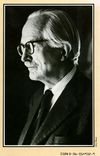Close Quarters
Close Quarters is the first novel by the British mystery writer Michael Gilbert. Published in England by Hodder & Stoughton in 1947, it did not appear in the United States until 1963. By then Gilbert's reputation had been firmly established in both countries and his regular American publisher for many years had been Harper & Row. Close Quarters, however, was published by Walker and Company, a less prestigious house. The novel's form is that of many of the Golden Age mysteries that had been popularized during the 1930s by writers such as Agatha Christie, Dorothy L. Sayers, and Michael Innes. It is difficult to discern the author's intentions: it may be a parody of the form presented with a straight face, or it may be a clever pastiche. It does, however, introduces Inspector Hazlerigg, who will be a recurring character in a number of Gilbert's works throughout the 1950s.
A series of deaths, the first one an apparent accident, take place not long after World War II in the normally quiet cathedral town of Welchester, more particularly within the "close" of the 500-year old cathedral itself, "close" being the English word for the precincts of a cathedral. Although hard-boiled private-eye stories such as those by Raymond Chandler had already begun to displace the older form, Gilbert makes a conscious effort to mimic some of the classic detective story's typical features. The setting is the tightly limited confines of the cathedral and those houses within its exterior walls, much as many Golden Age stories were set in isolated country houses; two full pages are devoted to a complete cast of the characters inhabiting the close; the characters themselves are also limited to those ecclesiastics living within those confines; there are three full-page diagrams showing the grounds of the close with its cathedral and houses; an inspector is sent down from Scotland Yard to conduct the inquiries; a fine imitation of a London Times crossword puzzle is presented, including the necessary clues, and is the subject of an entire chapter, with three iterations of the puzzle itself being shown as it is gradually filled in by two of the characters; and there is much leisurely description of the cathedral, the neighboring houses, and of the characters themselves.
dark edge -- add quote from publisher at his death
Notes
